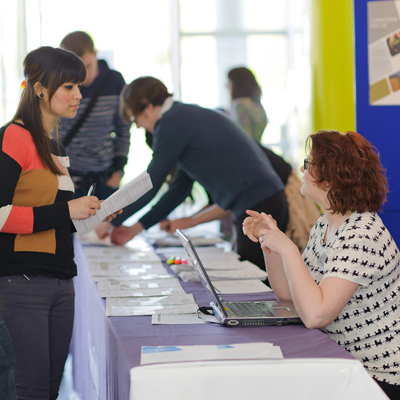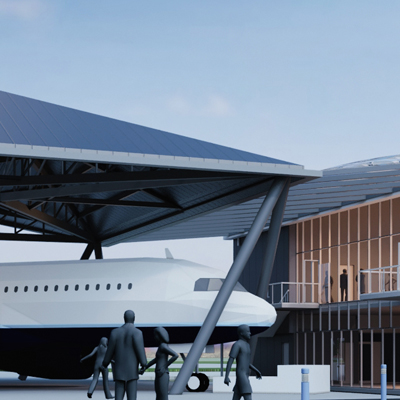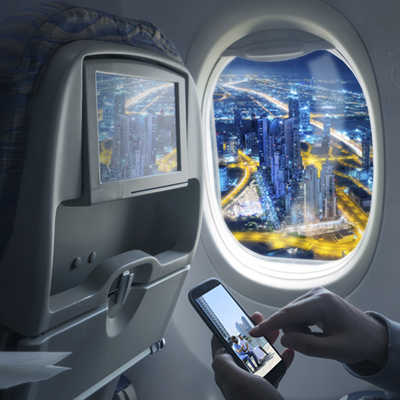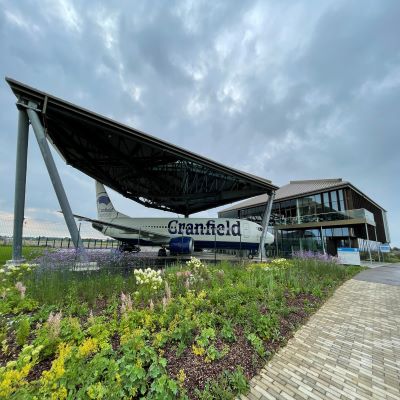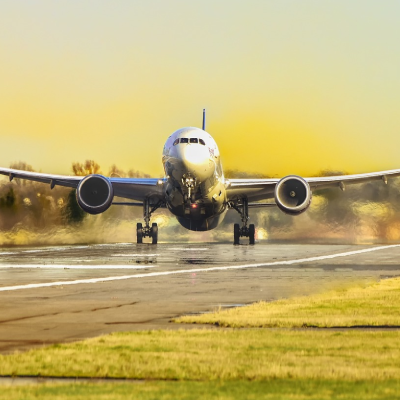Dr Thomas Budd, Cranfield University Lecturer in Airport Planning and Management, from the Centre for Air Transport Management and Passenger Experience Laboratory, DARTeC (Digital Aviation Research and Technology Centre), comments on the future of air travel:
“Although it is impossible to predict precisely what the full implications of the COVID-19 crisis will be for society, it is fairly safe to assume that the future will look quite different from how it looked just a few months ago. This is certainly the case for the air transport industry, which is continuing to suffer enormously as result of the pandemic. There have been notable shocks in the past, including the September 11 attacks in 2001 and the SARS epidemic in 2002 to 2004, but the scale and magnitude of the current crisis is unprecedented.
“Some of the most immediate and obvious impacts in the aftermath of these events was the rapid (and in some cases, permanent) alterations for air travellers. For example, following a foiled terrorist plot in 2006 a limit of 100ml was placed on the size of liquids allowed to be taken into the cabin. This requirement is now an accepted, if inconvenient, part of modern air travel
Passenger checks
“It seems possible, even likely, that similarly significant changes to the air passenger experience following COVID-19 will also occur. While few people will have regularly used the term ‘social-distancing’ prior to 2020, it has quickly become an established and accepted part of everyday life. Various short-term solutions have been proposed to include social-distancing for air travel, including leaving the middle seats free on aircraft or enforcing distancing measures in airport queueing areas. However, given that airlines rely heavily on filling their aircraft to remain profitable under ‘normal’ conditions, it is hard to see how airlines could sustain their operations when flying at a maximum of 66% capacity, or even whether such an approach would have the desired effect. Michael O’Leary, CEO of Ryanair, recently branded the idea as ‘idiotic’, while John Holland-Kaye, Chief Executive of Heathrow Airport, noted that “It's just physically impossible to socially-distance with any volume of passengers in an airport.” Heathrow Airport has since announced that they will be trialling large-scale temperature checks of passengers in the airport, with those failing the test being denied travel.
“It is, of course, equally important that steps are taken to help protect cabin crew, security and other staff members. It would seem likely that the use of Personal Protective Equipment (PPE) for staff will become commonplace, as will the widespread adoption of facemasks for both passengers and staff.
Technology solutions
“In the medium to longer-term, alternative solutions will be needed. While technology should rarely be viewed as some sort of ‘silver bullet’, it is likely to play a key role here. Even before this crisis took hold, work in the Passenger Experience Laboratory in DARTeC was underway examining future concepts of aircraft cabin design that sought to minimise the spread of infectious diseases. These concepts include implementation of touchless surfaces to avoid indirect contamination, sanitising surfaces with UV light, or even using ultrasensitive chemical detectors to identify the presence of pathogens and unwanted particles in the air.
“Technology may also have a key role to play as part of the airport experience, where biometric, camera, and computer vision technologies could combine to track passengers through the airport. This could be valuable both in a real-time decision-making context, but also for determining in retrospect who an infected passenger may have come into contact with on their journey. For such approaches to work, a mix of advanced data capture, analytics and decision-making capabilities will be needed; involving cameras and other sensor-based technologies to determine passenger flow, densities, and behaviour.
“Other examples could include the adoption of ‘virtual queuing’ practices, where passengers are allocated or reserve specific time slots for check-in, security processing and boarding. The idea here is to reduce the potential for congestion and large queues to form at peak times. Such schemes have already been trialled successfully, including at Gatwick Airport, who recently trialled boarding passengers by seat number. In theory, virtual queuing would also allow passengers more time to take advantage of food/beverage and retail offerings, which could also yield significant commercial benefits for the airport operator.
“There are likely to be many other areas where technology will have a role to play in shaping the post COVID-19 passenger experience. As ever, success will depend largely on the ability of the various operators, service providers, governments and regulators, to work collectively in a coordinated effort towards a common goal. If nothing else, past shocks to the system have shown air transport to be an extremely resourceful and resilient industry. It is likely that all of these qualities, and more, will be required again if aviation is to bounce back from this current crisis.”
About Cranfield University
Cranfield University is a specialist postgraduate university that is a global leader for education and transformational research in technology and management.

